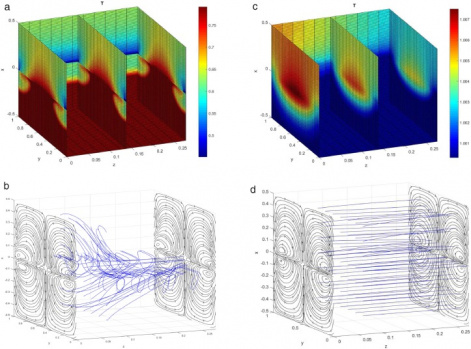Scientists have created a mathematical basis to simplify studies in the field of liquid technologies
27 August 2019 г.

In recent decades, this scientific field has experienced a real boom due to the importance of its practical application in various fields of space technology, power generation sector and industry. In particular, heat and mass transfer processes occur in many technical systems which use liquid or gaseous media, and their study is necessary for the development of high technology with the application of evaporators and condensers, technological methods of cooling and thermal stabilization of microelectronic equipment.
The project, supported by grants from the Russian Foundation for Basic Research and Russian Science Foundation, was headed by Olga Nikolaevna Goncharova, professor of the Department of Differential Equations at the Altai State University. The results of scientific research are described in articles published in the highly rated journals “Applied Mathematical Modelling” and “Microgravity Science and Technology”.
Owing to a unique installation built at the S. S. Kutateladze Institute of Thermophysics SB RAS, equipped with a number of the latest modern devices, the scientists were able to implement a large program of experimental studies of the dynamics of a horizontal evaporating liquid layer. The need for a theoretical study of convective flows of liquids and cocurrent gas flows under the conditions of evaporation or condensation at the interface is due to the necessity of developing concepts for new experiments and predicting their outcomes.
“One of the main issues of mathematical modeling of convection of liquids in the framework of classical or new mathematical models is the construction of exact solutions for the governing equations,” – explains Olga Goncharova. - In our work, based on three-dimensional exact solutions of the Navier – Stokes equations in the Oberbeck – Boussinesq approximation, we conducted an analytical and numerical study of two-layer flows with evaporation and condensation at the interface. Three-dimensional solutions is a rather rare example which is difficult to create. With their help, we were able to quickly and efficiently study the influence of such factors as thermophysical properties of the working media, type of heat load at the boundaries of the flow region, and geometry of the system on the characteristics of the emerging flow regimes. The solutions we managed to construct became a three-dimensional generalization of the Ostroumov – Birich solution and these solutions have a group nature. The latter guarantee the preservation of the symmetry properties included in the derivation of the basic equations and, thereby, ensuring physical likelihood and physical (experimental) implementation of such solutions. "
According to the project supervisor, in the publications a classification was made of the three-dimensional flow regimes in the working “liquid-gas” systems of the “ethanol-nitrogen” and “HFE7100-nitrogen” types with different ratios of the thicknesses of the liquid and gas-vapor layers under the low and normal gravity conditions.
According to the investigation results, scientists from the Altai State University and ICM FIC KSC SB RAS created the basis for optimizing and improving applied developments in the field of liquid technologies, including liquid cooling, thermal stabilization systems for microelectronic equipment, liquid-layer information recording systems, obtaining high-quality crystals without structural defects, and so on.
Source: Science in Siberia
Share:
